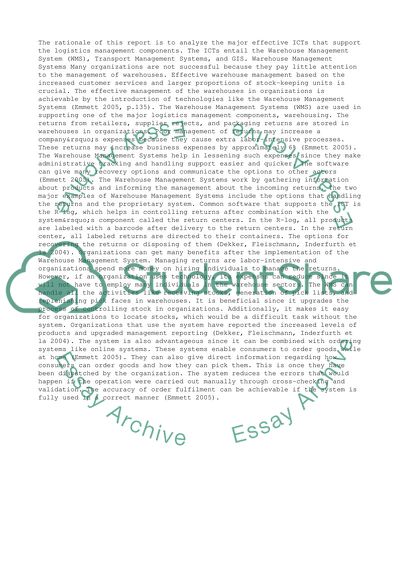Cite this document
(“Logistics and Operations: Warehouse Management Systems, Transport Essay”, n.d.)
Logistics and Operations: Warehouse Management Systems, Transport Essay. Retrieved from https://studentshare.org/business/1400822-logistics-and-operations-warehouse-management-systems-transport-management-systems-and-globalpositioning-system
Logistics and Operations: Warehouse Management Systems, Transport Essay. Retrieved from https://studentshare.org/business/1400822-logistics-and-operations-warehouse-management-systems-transport-management-systems-and-globalpositioning-system
(Logistics and Operations: Warehouse Management Systems, Transport Essay)
Logistics and Operations: Warehouse Management Systems, Transport Essay. https://studentshare.org/business/1400822-logistics-and-operations-warehouse-management-systems-transport-management-systems-and-globalpositioning-system.
Logistics and Operations: Warehouse Management Systems, Transport Essay. https://studentshare.org/business/1400822-logistics-and-operations-warehouse-management-systems-transport-management-systems-and-globalpositioning-system.
“Logistics and Operations: Warehouse Management Systems, Transport Essay”, n.d. https://studentshare.org/business/1400822-logistics-and-operations-warehouse-management-systems-transport-management-systems-and-globalpositioning-system.


